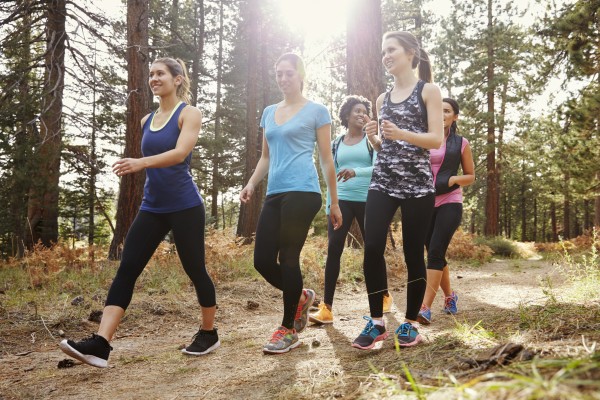When Did You Learn To Walk?
Posted Apr 10, 2021 at 09:41
Posted Apr 10, 2021 at 09:41

We are born to walk. Our body is designed to perform that task daily with fairly low energy expenditure and unless we have some pain, pathology or trauma in a lower limb, we take it for granted.
Because we walk every day, we may not pay attention to the quality of our walking.
Still, it is one of the very important things that we look at when a person comes in to the clinic as it gives a lot of valuable information and it can affect other areas in the body than just lower limbs.
If you want to have less back pain, neck pain, headaches, knee pain, you want to walk correctly.
It may seem as natural thing but if not done correctly, walking can contribute to all these problems. So what should you pay attention to get the most out of your walking?
1. Reduce impact- similarly like with running. If you notice that you strike hard with your heel while walking then try to focus on amending that and put some weight through the middle of your foot. When you make a step and strike hard with your heel, it sends force up through the leg and up to the hip. But if you come down at the midfoot first, then the fascia at the bottom of the foot is doing what it is designed to do- absorb the shock and take load away directly from the skeletal elements.
2. Shorten your stride. The average length of a step is approximately 15 inches. Trying to take too big steps can again result in excessive heel strike leading to knee and hip problems.
3. Slightly lean forward. Just slightly! We are not saying slouch when walking, but rather- keep your back relaxed. Leaning backwards will put more stress through the heel and encourage more stress on the bone tissues.
4. Engage your glutes. Glutes muscles play important role in gait and keeping the pelvis and the trunk in the correct position.
5. Get some gel insoles. Most sport shoes have good cushioning inbuilt but if you have to wear fancy shoes, dress shoes with ridged insoles then it may be a good idea to get simple gel insoles for the extra cushioning especially if you are walking on hard surface such as pavement. Some shoes, especially the �ballerrina� type with ultra-thin soles are definitely a no-go if you want to go for walks and protect the health of your joints.
6. Posture. Keep relaxed back, not leaning to much forward and pushing your butt out and not leaning too much back. When you lean too much forward, and bring your head too far out, you create jarring in the neck and can get headaches because you are compressing the suboccipital part of your spine. If you are not sure whether you have a good posture when walking, do now and then some chin tucks just for a reminder of where you want the head position to be. Ears directly over the shoulders.
7. The same goes for rounded shoulder and rounded back. If you do that, stop it now! Similar to the chin tucks, while you walking just give your body a little reminder of a good posture. Grab your wrists behind your back and stretch your arms back while you walking. It reminds you about good posture and allows you breathe better.
8. Stretch, foam roll, get a massage! If you walk a lot, don�t forget to give something back to your body for doing all the hard work. Massage, myofascial release with foam roller and stretch will help to keep your muscles in good condition.
9. Walk in nature if you can. It will encourage positive feelings, you will get more oxygen, feel more relaxed and energised.
10. Steve Jobs used to do walk meetings as he found them increasing connection between the participants walking side by side and creativity. There are studies from Stanford University, which show that our creativity can increase by 60% when walking. So next time you have a problem to discuss, why not to try to do it while walking. You may come up with new ways of solving it.